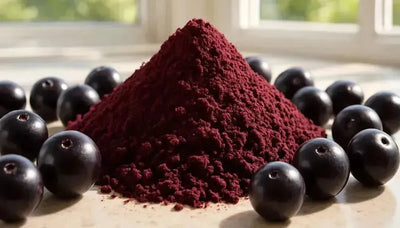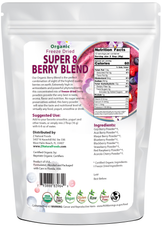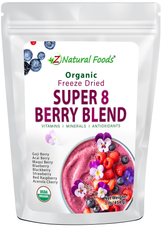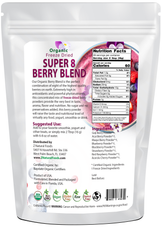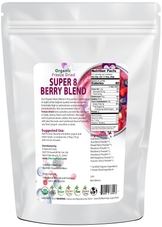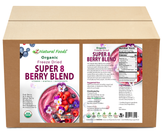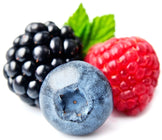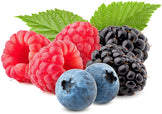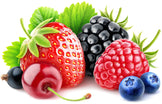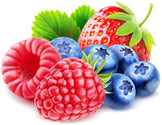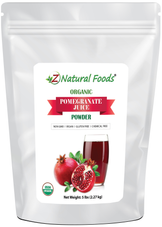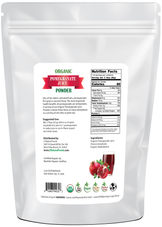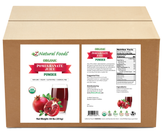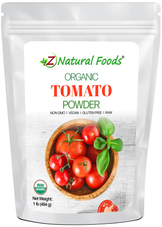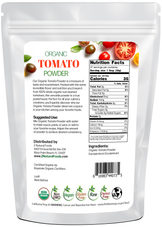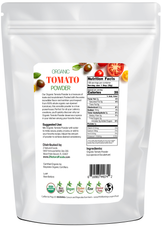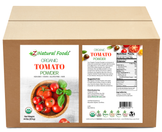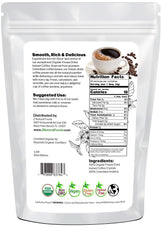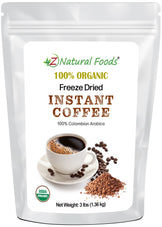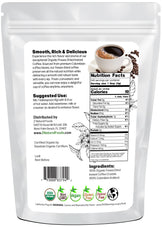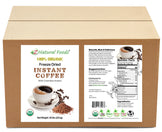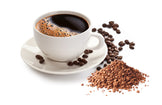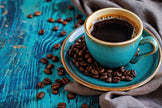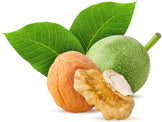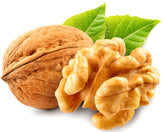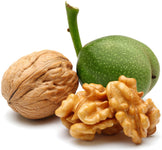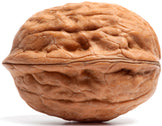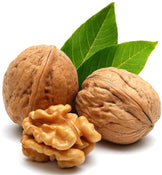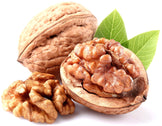Description
Description
As you discovered in our “Introduction to the Mediterranean Lifestyle” article, the true and most accurate indicator of success for longevity and health is ‘staying true to the diet’.
The world-famous Mediterranean (MED) lifestyle is the most well-known and intensely studied combination of nutritional and behavioral habits.
A few critical elements to the success of the MED lifestyle are the unwavering commitment to the quality and freshness of the ingredients used and the balance between work and leisure time with the incorporation of midday habits like going home for lunch or taking a nap.
This dedication ensures you always consume the best, most nutritious foods and faithfully live this lifestyle. Unfortunately, living in a fast-paced Western society comes with challenges that may create issues for dedicated compliance. Therefore, being adaptable and incorporating tools to help you stay compliant may be necessary. Remember, commitment is the key to your health journey.
As you have learned from many of our previous articles, the idea that we can’t substitute fresh food with a properly made powder (when necessary) to nourish our body is simply untrue.
Functional superfoods offer a convenient way to support nutrient intake, and their versatility allows for endless culinary creations. They are a powerful tool in your quest for a healthier lifestyle, proving that we can provide foods that can be preserved and stored healthily without using additives and preservatives.
In today's article, we discuss our top five functional food products that can be easily incorporated into your daily consumption (when necessary) to help you stay compliant with the MED lifestyle. This convenience empowers you to control your health journey, making it easier to stay on track with the Mediterranean lifestyle.
Five best superfoods for the Mediterranean Diet
Before we begin our top five list, let’s discuss what these picks have in common.
Each of these foods is known for being a good source of specific, unique compounds, but they are also rich in a family of compounds known as polyphenols.
Polyphenols are a term used to describe a general category of compounds found in a broad spectrum of fruits, vegetables, and tea that work as “reducing agents” along with other compounds known as antioxidants to support a healthy inflammation response and the body's ability to protect and repair damaged tissue caused by oxidative stress.
While over 8,000 polyphenols have been identified, some of the most common are flavonoids, flavonols, and anthocyanins. The importance of discussing these various compounds allows you to more clearly understand the wide range and complexity of nourishment you are getting from these powerful foods.
Now, on to our top five list of most important superfoods for the Mediterranean diet:
1) Tomatoes
Our first food powder pick is our spray-dried organic tomato powder. Spray drying is a method that is a testament to efficiency and practicality. The tomato pulp is efficiently sprayed into a stream of hot air, and as the droplets descend through a tall cylinder, they dry and transform into a fine powder. A spray-dried product averages up to 1% moisture content; therefore, it allows for more accessible storage options and blending capability, as well as supporting the natural flavor profile of the fresh food version.
We do not suggest or recommend that you use this as a replacement for making fresh traditional tomato sauce. Let’s face it: nothing beats Grandma’s Sunday gravy. However, our tomato powder has many other applications, like making a quick tomato soup or a custom-made V8. Remember, this is about compliance, so use the tools appropriately and when necessary.
Tomatoes Contain A Treasure Trove of Nourishment
Carotenoids are a class of red, orange, or yellow fat-soluble pigments produced by plants, algae, and photosynthetic bacteria. While lycopene is what you often associate with tomatoes, you are very mistaken if you think that is all they offer regarding nourishment.
There are more than 600 types of carotenoids (some of the most common include alpha and beta carotene, lycopene, lutein, and beta-cryptoxanthin), all with unique attributes that are researched for their ability to take on antioxidant-like qualities potentially.
Carotenoids are classified into two primary groups: Xanthophylls (primarily protect from too much sunlight, contain oxygen, more yellow pigment, and are associated with nourishing the eyes), which closely associate with green leafy vegetables, and Carotenes (have no oxygen and are associated with orange pigment).
For more information about Organic Tomato Powder, go here:
2) Berries
Unless you have been living under a rock for the past ten years, you know the importance of consuming a wide array of berries, their connection to good health, and their significance to the Mediterranean lifestyle.
Therefore, our second pick is our Super 8 Berry Blend.
While berries play a critical role in the Mediterranean lifestyle, it is worth noting that berries are considered a staple food in many cultures worldwide. However, while some of these berries are regarded as everyday foods, they are often used as local medicines or tonic foods, depending on the culture. For example,
- Goji berries are not just a staple in the Asian diet but also a primary tonic food and part of the Traditional Chinese Medicine system. In TCM, goji is traditionally known to tonify all three treasures (Jing, Shen, Qi), Yin, and Yin blood, brighten the eyes, enter the liver, lung, and kidney meridians, and have a sweet flavor and a neutral, balancing temperature.
- Acai berries and Acerola Cherries are essential staples in the South American diet and are used in various applications for local remedies.
- Blueberries, Strawberries, and Raspberries are considered common foods in the American diet and are studied worldwide for their powerful nourishing qualities.
While each berry has unique qualities, the real power lies in their combination. The concept of synergy teaches us that the whole is greater than the sum of its parts.
When it comes to berries, this means that the potent compounds in various berries have a broader spectrum and nourishing effect than any individual compound within that mixture. Therefore, combining a wide variety of berries will provide more potent nourishment than consuming a standardized version of any individual berry. However, that does not negate the fact that each berry provides powerful nourishment.
For example, blueberries have impressive preliminary and human studies showing a broad spectrum of nourishing benefits for the brain and nervous system. One of the blueberries' primary mechanisms of action is their direct effect on improving vascular and cerebral blood flow.
In simple terms, cerebral blood flow measures the blood delivery rate in the arteries to a capillary bed in the brain tissue. While researchers found that up to six cups of blueberries daily improved memory in just 12 weeks, this was determined to be an unrealistic dose for most people to stay consistent with. Therefore, it was determined that one cup of blueberries daily for older adults improved long-term memory.
A survey of the antioxidant capacity and phenolic composition of blueberries, blackberries, and strawberries concluded that blueberries have exceptionally high levels of anthocyanidins and proanthocyanins.
For more information about Organic Freeze Dried Super 8 Berry Blend, go here:
Organic Freeze Dried Super 8 Berry Blend
3) Coffee
Outstanding research shows that drinking coffee (between 1 and 4 cups daily) in its most natural form helps you meet the goal of consuming a wide array of compounds with nourishing and therapeutic benefits.
Many health experts believe a diet focused on high amounts of flavonoids is critical to supporting a healthy aging process because these compounds are known as nature’s biological response modifiers. It does not seem to matter if you acquire them from food or supplements; what counts is the total daily amount you consume.
These experts believe we should consume at least 2000 milligrams of flavonoids daily sourced from various foods and supplements. According to the Phenol-Explorer database, coffee was ranked #11 in the top 100 best antioxidant foods. One cup of regular coffee provides 400-600 milligrams (12 ounces of decaf provides 400 milligrams) of these potent compounds, making reaching your daily 2000 milligram polyphenol goals much more manageable.
In a study discussing the effects of coffee consumption on subclinical inflammation and other risk factors for type 2 diabetes, the following was stated:
- Coffee consumption increased coffee-derived compounds, mainly serum caffeine, chlorogenic acid, and caffeic acid metabolites.
- Significant changes were also observed for serum concentrations of interleukin-18, 8-isoprostane, and adiponectin.
- Serum concentrations of total cholesterol, HDL cholesterol, and apolipoprotein A-I increased significantly by 12%, 7%, and 4%, respectively, whereas the ratios of LDL to HDL cholesterol and of apolipoprotein B to apolipoprotein A-I decreased significantly by 8% and 9%, respectively.
Therefore, the following was concluded. “Coffee consumption appears to have beneficial effects on subclinical inflammation and HDL cholesterol, whereas no changes in glucose metabolism were found in our study. Furthermore, many coffee-derived methylxanthines and caffeic acid metabolites appear as coffee intake biomarkers.”
Interestingly, while not as much in the spotlight, gourmet mushrooms are also part of the MED lifestyle. However, the acquired earthy flavor may cause some resistance to adding them to daily food consumption. Therefore, utilizing a mushroom coffee may be the perfect solution. We know you may need some convincing to try this unique combination, but believe it or not, these two powerful foods are an ideal combination of nourishment and flavor profile. The smooth, rich texture and mild acidity of coffee combined with the earthiness of mushrooms is a match made in heaven.
Mushrooms also contain a wide range of nourishing compounds. One of the many superstars is polysaccharides. Polysaccharides are believed to be mushrooms' primary family of compounds that may support a healthy aging process. Mushrooms contain a wide range of non-starch polysaccharides (carbohydrate fractions excluding starch and free sugar) like chitin, beta-glucans, alpha-glucans, hemicellulose, mannans, xylans, and galactan's. Non-starch polysaccharides are distinguished into soluble and insoluble fractions, with up to 90% being insoluble fractions.
Most (around 80%) of insoluble polysaccharides are chitin, including beta-glucans bound onto chitin or protein. Polysaccharides can support a wide range of actions in the human body. They have been shown to have immunological, neurogenic, cardiovascular, and microbiome effects and a host of other nourishing qualities.
For more information about Organic Freeze Dried Instant Coffee, go here:
Organic Freeze Dried Instant Coffee
For more information about Organic Instant Mushroom Coffee, go here:
Organic Instant Mushroom Coffee
4) Walnuts
Nuts and seeds are a tremendous category of food that offers a fantastic level of flavor and texture profiles, versatility, and nourishment. Within the nuts and seeds category, walnuts stand above the rest.
A 1-ounce serving of walnuts contains about 185 calories and 4 grams of protein and is a good source of vitamins and minerals such as vitamin E, magnesium, and phosphorus.
But these savory seeds offer so much more.
Walnuts have an excellent macronutrient profile.
Walnuts are a quality source of protein, providing four grams per ounce (for comparison, beef is, on average, 7 grams per ounce). However, like most plant-based protein sources, walnuts are an incomplete protein.
It was once believed that a complete protein is a food that simply contained all nine essential amino acids. Modern research has enlightened us that the need for these essential amino acids to be in insufficient and consistent amounts is equally crucial in defining a complete protein. Therefore, a food can be considered an incomplete protein if one or more essential amino acids are lacking, even if all nine EAAs are present. Insufficiency is determined in the above case through the amino acid score. The score is calculated by dividing the content of individual EAAs in food protein by the same amino acid content in the reference pattern.
However, when it comes to the body's need to create muscle and enzyme proteins, it's all about having all nine essential amino acids present. The end result is the same whether the protein comes from a single source of complete protein, like egg and whey, or a combination of sources, like plant proteins. The good news is that pairing walnuts with another well-balanced protein source is simpler than you might think. Combining walnuts with beans (another star of the Mediterranean lifestyle) will provide your body with all the necessary ingredients for creating muscle and enzyme proteins. A delectable walnut and three-bean salad drizzled with extra virgin olive oil, a squeeze of lemon, and a sprinkle of salt and pepper is a perfect and flavorful way to achieve this goal.
Walnuts' are also an outstanding source of essential fatty acids and are said to have the best profile of all nuts and seeds. There are two primary types of fats: saturated and unsaturated. Structurally speaking, saturated fats have no double bonds, whereas unsaturated fats have one or more of these bonds.
A fat with one double bond is considered monounsaturated, whereas if it has more than one, it is polyunsaturated. Polyunsaturated fats are broken down into two classes: Omega-3 and 6 fatty acids. An important point to understand is that while specific foods may be higher in a particular type of fat, all foods contain a mixture of saturated, mono, and polyunsaturated fats. Like most other “nuts,” or in this case, seeds, walnuts contain the majority of their calories from fat, making them energy-dense, high-calorie foods.
Walnuts are a great source and are higher than most seeds in polyunsaturated fatty acids, the most abundant one being omega-6 linoleic acid. However, around 12% of walnuts' fatty acid profile comes from the Omega-3 fatty acid Alpha linoleic acid(ALA), making walnuts a well-balanced omega fatty acid food.
The following was stated in a study discussing dietary ALA's effects on reducing the cardiovascular risk factors of inflammation and lipid profile imbalances in hypercholesterolemic men and women:
- Alpha-linolenic acid (ALA) reduces cardiovascular disease (CVD) risk, possibly by favorably changing vascular inflammation and endothelial dysfunction.
- Inflammatory markers and lipids and lipoproteins were assessed in hypercholesterolemic subjects (n = 23) fed two diets low in saturated fat and cholesterol and high in PUFA varying in ALA (ALA Diet) and linoleic acid (LA Diet) compared with an average American diet (AAD).
- The ALA Diet provided 17% energy from PUFA (10.5% LA; 6.5% ALA); the LA Diet provided 16.4% energy from PUFA (12.6% LA; 3.6% ALA); and the AAD provided 8.7% energy from PUFA (7.7% LA; 0.8% ALA).
- The ALA Diet decreased C-reactive protein (CRP, P < 0.01), whereas the LA Diet tended to decrease CRP (P = 0.08).
- Although the two high-PUFA diets similarly decreased intercellular cell adhesion molecule-1 vs. AAD (-19.1% by the ALA Diet, P < 0.01; -11.0% by the LA Diet, P < 0.01), the ALA Diet decreased vascular cell adhesion molecule-1 (VCAM-1, -15.6% vs. -3.1%, P < 0.01) and E-selectin (-14.6% vs. -8.1%, P < 0.01) more than the LA Diet.
- Changes in CRP and VCAM-1 were inversely associated with changes in serum eicosapentaenoic acid (EPA) (r = -0.496, P = 0.016; r = -0.418, P = 0.047) or EPA plus docosapentaenoic acid (r = -0.409, P = 0.053; r = -0.357, P = 0.091) after subjects consumed the ALA Diet.
- The two high-PUFA diets decreased serum total cholesterol, LDL cholesterol, and triglycerides similarly (P < 0.05); the ALA Diet decreased HDL cholesterol and apolipoprotein AI compared with the AAD (P < 0.05).
Therefore, it was concluded that “ALA appears to decrease CVD risk by inhibiting vascular inflammation and endothelial activation beyond its lipid-lowering effects.”
As if that was not enough to convince you how nourishing walnuts are, an assay that measures the total concentration of active compounds concluded that the top 50 foods with the highest levels of active antioxidants were “Based on typical serving sizes, blackberries, walnuts, strawberries, artichokes, cranberries, brewed coffee, raspberries, pecans, blueberries, ground cloves, grape juice, and unsweetened baking chocolate were at the top of the ranked list.”
For more information about Organic Raw Heirloom Walnuts, go here:
To review all the products in our Nuts and Seeds category, go here:
5) Pomegranates
Pomegranates are considered superstars in the Mediterranean lifestyle, so combining them with walnuts packs a nourishing culinary punch. It is well known that opposites can attract, and from a culinary perspective, the flavors of walnuts and pomegranates complement each other quite well.
The acidic sweetness of pomegranates is a perfect complement to walnuts' astringent and oily flavor. They are also both rich in the family of the polyphenolic compound ellagitannins.
Raw pomegranates are mainly known for their nourishing levels of antioxidants and phytonutrients. All parts of the pomegranate plant (fruit, peel, leaf, seed, and flower)are packed with these potent compounds, but one of the superstars is a unique tannin called punicalagin.
Punicalagin is an ellagitannin (a polyphenol not absorbed into the bloodstream but instead hydrolyzed into ellagic acid) found in the peel of a pomegranate. This powerful compound has potentially proven antioxidant, hepatoprotective, and anti-atherosclerotic nourishing traits. It has also been shown to inhibit inflammatory pathways on the action of toxic substances and is highly tolerated. One of the primary and most impressive things pomegranates have been studied for is their ability to protect aging arteries and possibly reverse endothelial dysfunction. In this condition, the large blood vessels in the heart’s surface constrict instead of dilate.
A review discussing the vasculoprotective effects of pomegranate concluded that daily consumption of pomegranate juice lessens hypertension and attenuates atherosclerosis in humans. Overall, the studies point out that pomegranate has the potential for broader benefits and uses as an adjuvant therapy for a wide range of vascular issues.
Another review discussing the protective effects of pomegranate on endothelial dysfunction concluded that the components found in pomegranate have” beneficial effects on the cardiovascular system, improving parameters such as oxidative stress and the enzymatic antioxidant system, reducing reactive oxygen species formation and acting in an anti-inflammatory way.”
In conclusion, Western society has created a big mess with fad diets and short-term solutions for what are simply failures regarding proper lifestyle habit compliance. Contrary to the popular vote of the lazy person, Mediterranean lifestyle habits are actually easy to incorporate into your lives regardless of where you live, and thanks to technology, acquiring what you need in just a day or two to ensure you get the best nourishing quality ingredients is no longer a challenge.
However, living in a more fast-paced Western society, it is always best to have more choices and, more importantly, backups to help you stay on track. Therefore, we hope this article has inspired your culinary creativity and helped you understand how easy it is to keep on track to achieve good health, knowing that you have many tools at your disposal.
For more information about Organic Pomegranate Juice Powder, go here:
